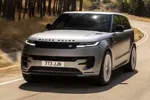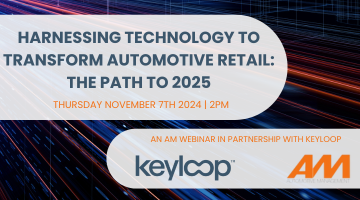Recent research conducted by Auto Trader for its Auto Trader Market Report revealed that the COVID-19 pandemic has accelerated the adoption of online car buying behaviour, as consumers and retailers adapt to a surge in shopping from home.
The stats reveal that among consumers who have bought a vehicle in 2020, many would have liked to have completed more of the jobs digitally, with almost half (46%) choosing to buy online for ease and convenience.
A further 35% of consumers want to purchase online to get the car quicker; 33% want to buy online because they think it’s easier to compare deals; and 23% of people want to buy online to avoid haggling in a showroom.
Clearly consumers are looking to complete more of the buying process online and OEMs are increasingly under pressure to offer a seamless, digital car-buying journey.
However, this is not an easy challenge, as the car buying process is complex, involving the digital showroom; car configurator; offers and finance; stock cars; dealer finder; used car; parts and accessories; brand merchandise; and customer service.
Consumers are facing up to 31 individual customer interaction touchpoints across multiple platforms on OEM websites.
When you add in the e-commerce element, the car buying journey becomes even more difficult and time-consuming for consumers.
Research from our Online Readiness Scorecard, which rates all UK brands on their omnichannel capabilities, reveals that three leading OEMs which recently introduced new eCommerce channels, ended up harming the online customer experience with the additional functionality.
With the eCommerce sections added, all three websites became more cluttered, journeys more disjointed and the messaging more confusing.
Car buyers ended up even less equipped to select the right car and payment method than before.
The good news is that the most significant conversion improvements usually come from eliminating dead ends, joining the individual website sections into seamless shopping journeys and providing clear messaging throughout.
Typically, conversion optimisation projects start with web analytics. Unfortunately, in automotive omnichannel retailing, the journeys are far more complex.
Consumers are not only selecting the right item to buy, but they also have cars to part-exchange and the best payment and ownership method to settle for.
The number of channels, lapsed time, item value and the levels of commitment and risk all make it more challenging than buying a T-shirt or Prime membership on Amazon.
The answer is to create a simple retail conversion funnel (not complex user journey maps), divided into the awareness, consideration, purchase and retention layers.
The next step is to overlay the functionality needed to move shoppers from one layer down to another.
The final step is to identify the improvements required to smoothen the journeys, usually achievable by changing links, labels and content via the website CMS platform.
Of course, this approach won't fix everything, but it will very quickly eliminate the worst bottlenecks, increase the conversion rates and bring everyone closer to the sales volumes expected.
Author: Tony Patterson, senior partner, Auto Zebra














Login to comment
Comments
No comments have been made yet.